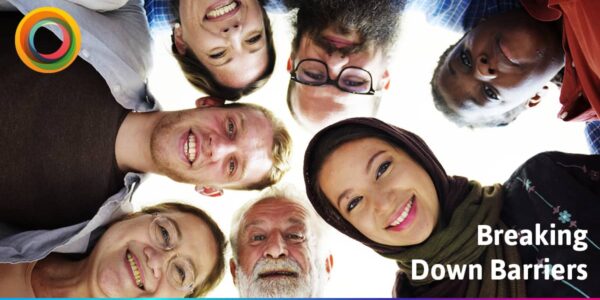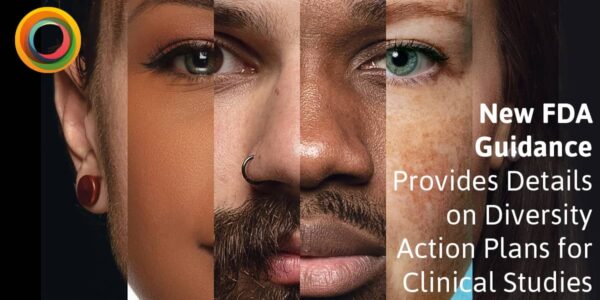
Our podcast and video series, mdtalk, explores the most important issues impacting clinical trials, patients, and the medical research industry today. In our third episode, we discuss one of the most prolific and important clinical studies of our time: the COVID-19 vaccination trials.
LaQuinta Jernigan, Executive Vice President for the Americas at mdgroup, is joined by Jameka Hill, Director of Patient Engagement and Advocacy and Clinical Trial Diversity at Moderna.
In this episode, we dive into Moderna’s groundbreaking COVID-19 mRNA vaccine trial and the incredible commitment they put into achieving one of the most diverse clinical trials in history – even slowing down enrollment in September 2020 when it appeared they were failing to recruit enough Black, LatinX and Native American participants.
This episode digs into why diversity in the vaccine trials was especially important, the ways Moderna achieved diversity and inclusion, and the lasting legacy of this commitment to diversity within the clinical research industry.
Watch the full conversation here:
Episode Summary
In the first two episodes of mdtalk, we discussed the reasons diversity in clinical trials matters and how barriers such as lack of information and accessibility can make patient recruitment within diverse communities difficult.
Due to the unprecedented scale of the pandemic, and the fact that the coronavirus has taken a heavy and disproportionate toll on people of colour, this was even more important for the COVID-19 vaccine trials.
Let’s look at some of the key statistics:
- In the US, Black people have been infected at nearly three times the rate of White Americans and were twice as likely to die from the virus, according to a report by the National Urban League
- For the 57% of Americans who have had at least one dose of the Covid-19 vaccine, where ethnicity data is available, only about 15% are Hispanic and 9% are Black: both lower rates than their proportion of the US population
- As well as a lack of health infrastructure and vaccine hesitancy in some states, vaccine accessibility disproportionately affects low-income people of colour
In this episode of mdtalk, Jameka Hill highlighted the deep-rooted issue of accessibility and diversity within the clinical research industry, something the team at Moderna have been trying to address for some time.
She said: “COVID really was the catalyst for Moderna. We’re truly committed to developing vaccines, therapeutics and medicines for all populations… Moderna is pioneering a new way to bring medicine to those that need it most.”
Adequate representation ‘at the core of the strategy’
Jameka explained the importance of taking a diversity-first approach from the beginning of the Moderna COVID-19 mRNA vaccine trials. This included making sure people from all backgrounds were aware of the opportunity to enrol, and forward planning how the team would navigate barriers to participation.
She told us: “We’re not a monolith – when it comes to people of colour, women, people in different regions. We really wanted to make sure we had a very strategic approach and, at the very core of how we ran our clinical trials, we were leading with empathy and understanding.”
Jameka credits the leadership team at Moderna for this approach, explaining how health equity is grounded in the values of the company.
LaQuinta highlighted the importance of diverse clinical trials to achieve health equity, saying: “It all starts with clinical research.”
“From that perspective,” Jameka responded, “delaying enrollment to ensure we had adequate representation, although not ideal, was more important to us than getting to the finish line, but getting there with the wrong trial composition.”
Pausing enrollment to ensure diversity
Enrolling participants onto a study and ensuring a diverse patient population have often been seen as mutually exclusive.
Jameka explained the importance of working closely with trial sites to ensure diversity was equally prioritised alongside speed of enrollment. Once Moderna saw sites were enrolling patients so quickly they were no longer hitting their diversity goals, they “made a very bold decision they were going to put people above profit and safety at the very forefront.”
This is when Moderna paused enrollment and reassessed their patient recruitment strategy.
“We learned a lot from it,” Jameka told us. “We learned how important it was to set goals upfront with sites and say, ‘Hey, this is what the demographics look like in your community. And this is what we need for you to contribute, along with the other sites, in order for us to make sure we have a mosaic of our diverse society’.”
“We don’t know everything”
To ensure full and fair representation of diverse communities, and to engage them in the clinical trial from the beginning, it was essential to enrol the local community leaders who know their communities best, and involve them in the trial design from the beginning.
Historically, there has not been much awareness or understanding of clinical trials amidst the general public, particularly in diverse populations. Jameka highlighted the importance of understanding the questions people may have around participation, as well as individual and collective fears.
She said, “When it came to COVID, we were literally trying to hit a moving target, and the EPI was ever-evolving. We really needed to work with community leaders and make sure we were able to answer the questions for that community.”
Diversity means representation of all people
As LaQuinta pointed out, diversity is about more than race: “true diversity takes into account age and gender, job role, economic status, physical and mental health.”
How did the Moderna vaccine trials achieve diverse representation across these areas as well?
“We set goals and benchmarks to make sure we had a representative female to male ratio.” Jameka explained. “Historically, most clinical trials are comprised of middle-aged white men living in coastal regions. We wanted to make sure we also had enough data on the safety and efficacy for women.
“We also wanted to make sure those with underlying health conditions were included. We didn’t just want adults 65 and older. While that was important, we also needed individuals who were 18 to 20, 20 to 45, etc.”
One of the biggest challenges was the large numbers of patients needed from each group to ensure the vaccine was safe and effective. The team at Moderna worked tirelessly to ensure all demographics were represented at every stage of the clinical trial.
Moderna are now focusing their efforts on adolescents and paediatrics. Jameka reassured us: “When it comes to medical research, safety is at the very foundation and heart of what we’re doing.
“Women who are pregnant and children who can’t provide their own consent are considered vulnerable populations. So traditionally, these groups are not included in the primary trial. That’s not to exclude anybody, it’s because we want to make sure that when we’re bridging down, when we’re providing these vaccines and therapeutics for the individuals who are most at risk or most vulnerable, that we have made sure that it’s safe for healthy adults and volunteers first.”
A considered approach to participation
Long term safety, ease of travel, shortening the time frame between visit and follow up correspondence, and being aware of any implicit bias were key considerations during the COVID-19 vaccine trials. This is especially important when it comes to working with so many different and diverse groups of people, and Moderna worked closely with sites to ensure all participants felt comfortable and accepted.
“We provided the talking points, ” Jameka explained. “We also asked the site, can you tell us a little bit about what your site looks like? If I were to come into your site, what would I see?
“When we think about COVID, and about what is polarising people, things like news topics are at the very heart of that. So, simple fixes, such as maybe turning on a cooking show, or National Geographic, or something that’s non-political can have a huge impact. It’s not people’s willingness to stand up and say, I want to be a part of this. It’s sites’ lack of confidence, and historic lack of working and engaging with different groups. I think people really want to be sensitive.”
Jameka credits the ‘significant effort’ of local advocacy and community organisations across the nation in boosting recruitment efforts by “engendering trust within the communities and helping people raise their hand.”
Clinical research as a public health initiative
COVID-19 trials have brought clinical research into public awareness like never before, highlighting huge gaps in knowledge and understanding and the importance of widespread healthcare education. Both LaQuinta and Jameka agreed, the onus is now on the clinical industry and governments to make clinical research awareness a public health initiative.
LaQuinta said: “There is a huge educational component. I’m really interested to see how we take this momentum and make more people aware of what a clinical trial is. How are we going to embed that into public health moving forward and use this momentum to expand possibilities for participation in other indications?”
This is particularly important for the Moderna mRNA vaccine, which uses technology typically misunderstood by the general public. Jameka told us: “People have a hard time trusting something if they don’t understand it.”
“Being able to read a little bit and see some videos on the basic mechanism of how mRNA works in the body, and how it differs from traditional vaccines, will help people feel more comfortable about what they’re actually receiving. And all that is available on the Moderna website.”
People over profit
Through the COVID-19 trials, Moderna has communicated a key message to the industry and world at large: healthcare is for everyone.
They have demonstrated incredible commitment to diversity, accessibility and inclusion during an extremely challenging time, and have made considerable contributions to the future of medicine.
As we move through the pandemic, we hope to see the continuation of patient-first approaches to clinical trial design, and the commitment of research institutions to create diverse and inclusive strategies that result in true healthcare equity.
For more content around key issues in the clinical research industry, follow us on social media on Twitter, find us on LinkedIn, and subscribe to our YouTube channel.







